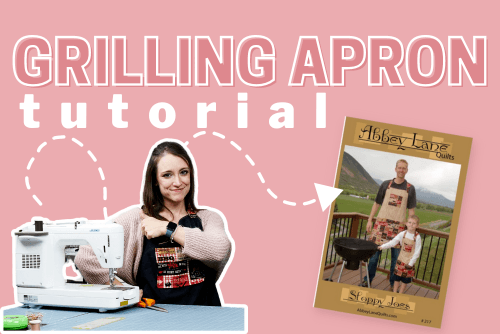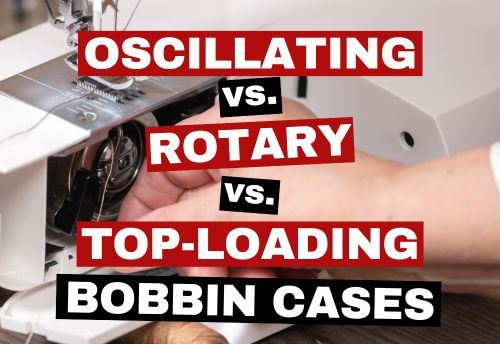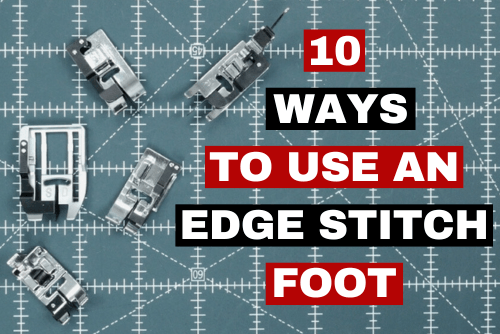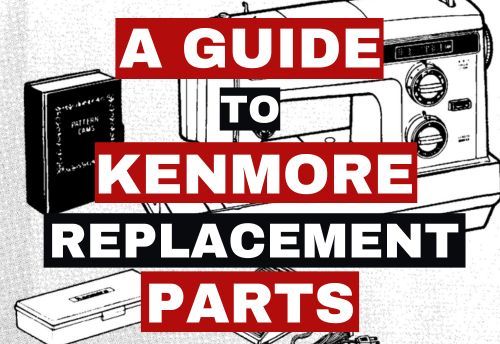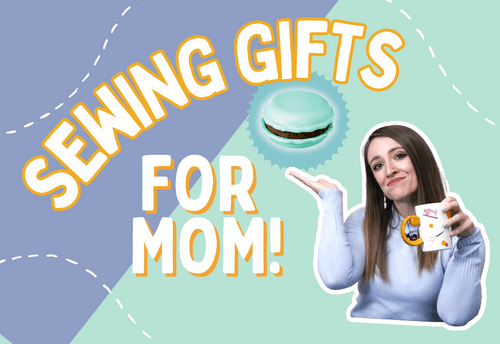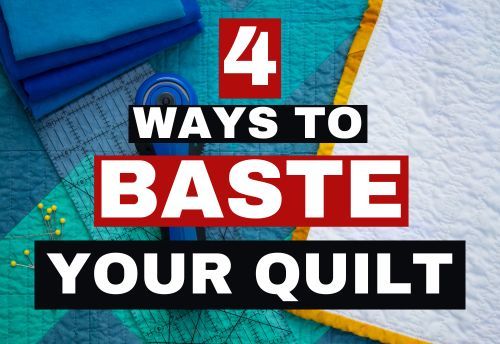WHY DID MY MACHINE COME WITH TWO BOBBIN CASES?
Did your machine come with two bobbin cases? Do you need clarification on what the purpose of each case is? Well, here's some helpful information (inspired by Tricia's recent Tik Tok) for you. See, although most machines only come with a single case, certain manufacturers include an additional case for free-motion quilting and embroidery. Why did they do this? Well, the pre-set tension on your primary case is for standard sewing. Unfortunately, the typical tension setting for normal sewing isn't always compatible with free-motion quilting and embroidery techniques. So having one bobbin case for traditional sewing and another for special functions allows you to get the appropriate tension setting for your project without messing with the factory settings of your primary case.
HOW DO I KNOW WHICH BOBBIN CASE IS WHICH?
Before I help you identify your cases, we need to review the basic anatomy of the modern top-loading bobbin case.
- Bobbin Holder - The bobbin holder is the center depression that houses your bobbin in the case. It's usually only slightly wider and deeper than the size of your sewing machine bobbin.
- Thread Hook - Not to be confused with "hook assembly," which is the part of your sewing machine that holds the case itself; the thread hook is the part of the case that catches your upper thread and carries it around the bobbin as it completes each rotation.
- Tension Spring - The tension spring grips your bobbin thread as your sewing machine's needle pulls it up, providing slack so the machine can form a proper lock stitch.
- Tension Screw - This is the part we will discuss the most. The tension screw can be turned right or left to adjust the position of the tension spring, adding or decreasing the amount of slack on your lower thread.

WHICH BOBBIN CASE IS FOR NORMAL SEWING?
Your primary bobbin case has been factory-set to have ideal tension settings for typical home-sewing projects using 60-wt thread. Understandably, the manufacturer does not want you to adjust these settings, so they must indicate that it needs to be left alone. Their solution is to spray the tension screw with green-colored Loctite spray. The Loctite prevents you from making adjustments (unless you force it), and the color alerts you not to adjust the screw. So if you've ever asked yourself, "why does my bobbin case have a green dot?" it's actually Loctite spray! Sometimes, manufacturers will use blue, pink, yellow, orange, or red instead of green. In most cases, the different color means they ran out of the green spray, so don't worry if you purchase a new case and it's different from your original. There are some exceptions to this, but we'll go over that a little later.
To summarize: green tension screw = main bobbin case for universal sewing with 60wt thread = do not adjust!
CAN I DO FREE MOTION OR EMBROIDERY WITH MY GREEN-DOT CASE?
Technically, yes. You can accomplish some basic FMQ and embroidery projects with your standard bobbin case if you use 60wt thread. However, once you start to do more specialized techniques requiring different thread weights, you will want to switch to your alternate bobbin case.
CAN I ADJUST THE TENSION SCREW ON MY MAIN BOBBIN CASE?
While you can break the Loctite seal with force to adjust your tension screw when necessary, we only recommend you do this if you have no other choice. It's not worth the headache of returning to the original tension setting, and you might damage your case. Instead, it would be best if you tried to find the correct balance by adjusting the top tension only. Then, if you're confident it's an issue with the bottom tension, consider replacing the case altogether.
If that's not an option, we recommend taking your machine to an authorized dealer to adjust these cases. For example, if you own a Baby Lock sewing machine, it's best to have a Baby Lock technician repair it.
WHICH BOBBIN CASE IS FOR FREE-MOTION QUILTING OR EMBROIDERY?
As you may have guessed, your specialized case will have a tension screw free of Loctite spray and color. With free-motion quilting and embroidery, you might need to adjust the lower tension to accommodate different thread weights, materials, designs, etc. Therefore, spraying the tension screw with Loctite spray wouldn't make sense. Another way to identify your specialized case is a dot in the bobbin holder. For extra measure, manufacturers use permanent ink (usually red, blue, dark green, or black) to mark the metal bed of your bobbin holder so that you can identify it as an adjustable case. But, again, the different colors usually mean nothing other than what they had available to use at the time.
To summarize: no color on tension screw + dark dot in the bobbin holder = specialty bobbin case = okay to adjust tension as needed.
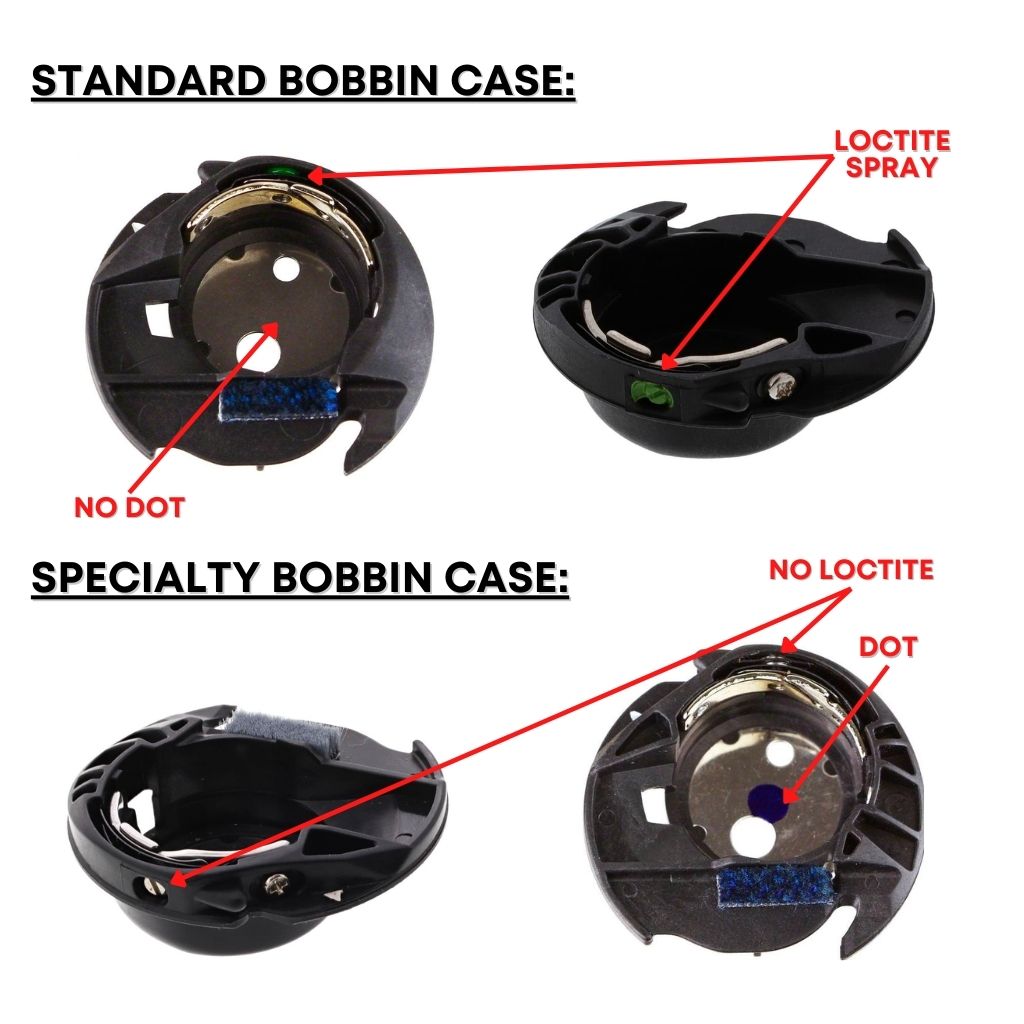
THERE ARE EXCEPTIONS
This information only applies to some sewing machine brands and bobbin cases. For example, the free-motion bobbin holder for the Janome MC6500 is designed to give a hand-quilted look (part #200445007). It always has a distinct light blue-colored Loctite spray on the tension screw despite it not being a standard case. However, it has other features that differentiate it from a typical bobbin case to help you identify it. If you get confused, our team can provide you with more information.
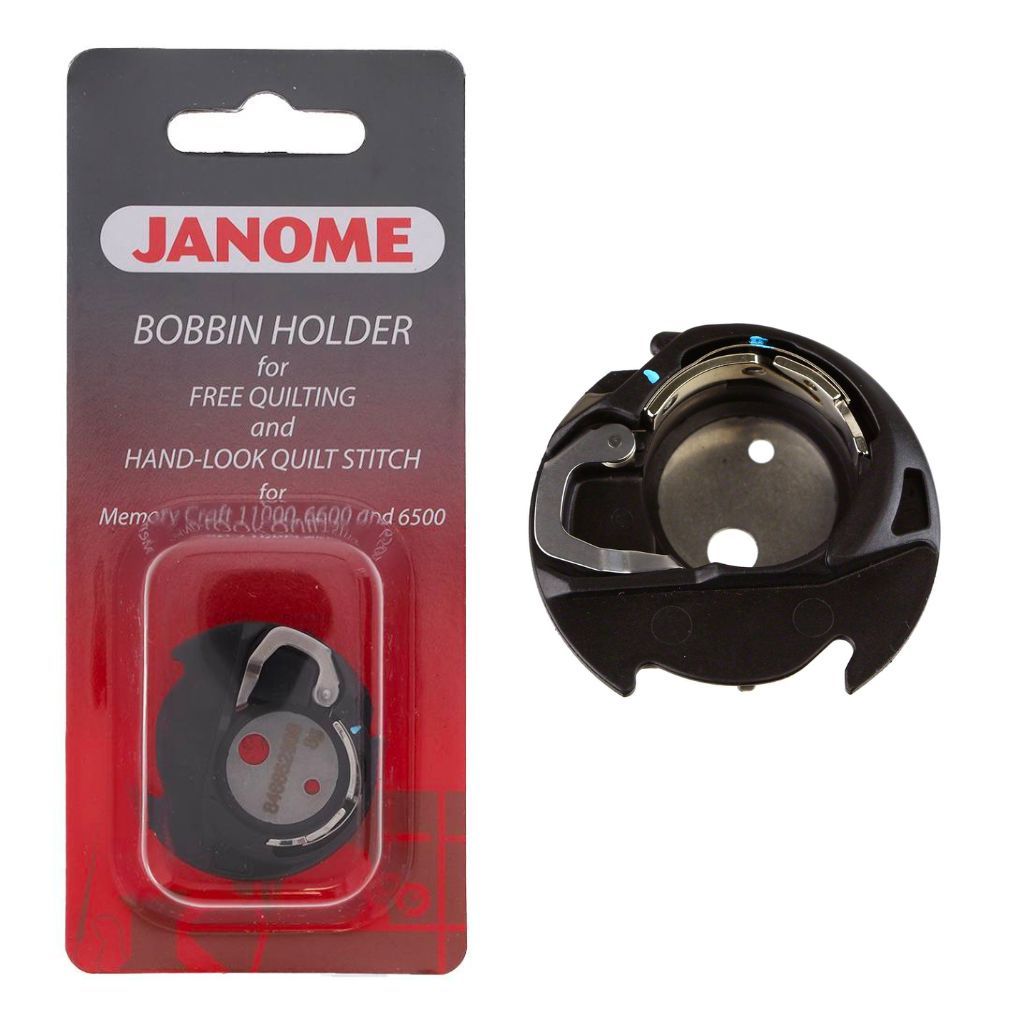
CONCLUSION
Ensuring you're using the appropriate bobbin case for your sewing machine and the specific project you're working on is crucial to ensuring your work's quality. Hopefully, we've provided some clarity for those of you with a machine that comes with multiple options. If you are ever uncertain when shopping for a new case, you can compare the part number to the one recommended for your machine in the manufacturer's parts list. Matching the exact part number is the best way to ensure you use the correct sewing machine replacement parts. If you need access to your model's parts list, you can always call our customer service team at (888) 824-1192. They would be happy to provide you with the exact part number!



